A trip to see the breathtaking mountain beauty of Nagano’s Kamikochi【Part 1】
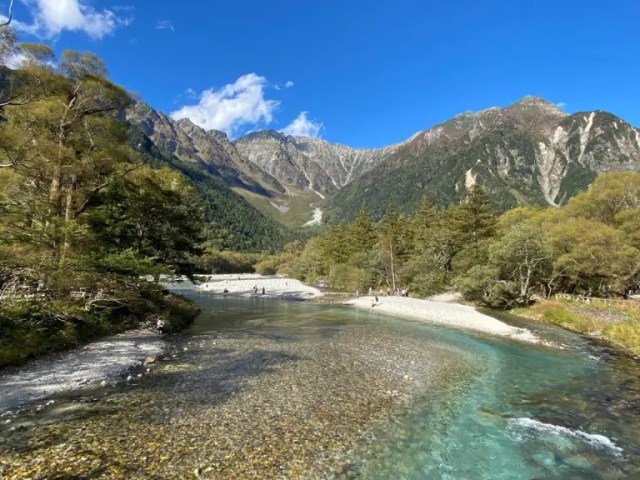
Getting there can be a little complex, but it’s all worth it once you see the views.
With the warmth of the summer sun having now faded away in Japan, it’s time to shift our outdoor fun destinations from the beaches to the mountains. Luckily Japan has plenty of places where you can enjoy beautiful alpine scenery, and one of the very best, Nagano Prefecture’s Kamikochi region, is where we recently headed for an overnight trip.
Kamikochi is part of the city of Matsumoto, located in the western part of Nagano. If you’re headed there from Tokyo, you’ll want to start by making your way to Tokyo’s Hachioji Station, where you can hop on the Azusa limited express train for the ride to Matsumoto Station, which takes a little under two and a half hours. At Matsumoto you can transfer to the Kamikochi Line and take it for 30 minutes to Shinshimashima Station.
▼ Some of the Kamikochi Line trains feature artwork of its mascot character Nagisa Endo.
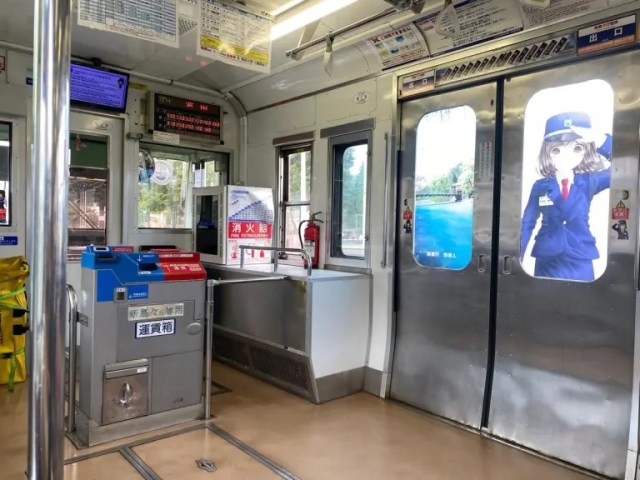
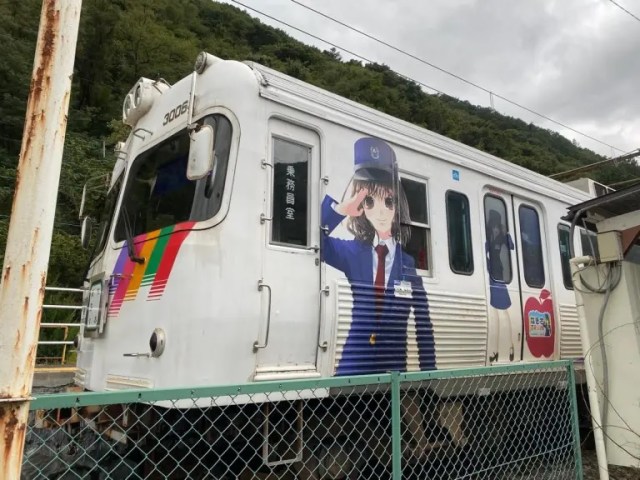
Right outside Shinshimashima Station (which is the last stop of the line) is a bus terminal, and here’s where you catch the bus that’ll take you the rest of the way to Kamikochi. For nature conservation reasons, traffic is limited to buses and taxis on the roads leading into Kamikochi; no private cars allowed.
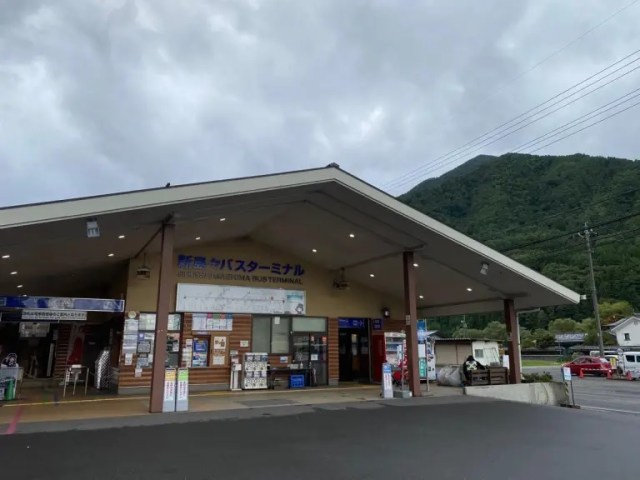
The bus takes about an hour, but it also treats you to some lovely views as you climb higher into the mountains, following the Azusa River for a stretch and passing by a series of dams, so you’ll probably want to keep your camera ready during the ride.
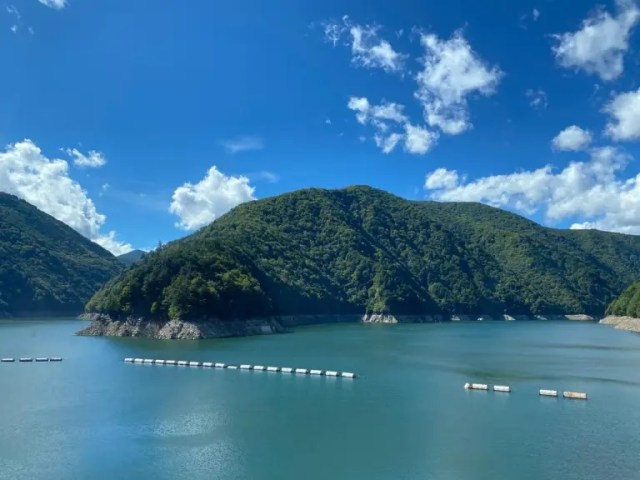
And when you finally do get off the bus? Kamikochi doesn’t waste any time making you feel like it was worth it, especially if you arrive on a day like we did where the sky is as blue as the crystalline mountain streams.

Kamikochi can be used as a staging area for long-distance hikes/camping trips deeper in the mountains, but the most popular area is the river basin around the Kappabashi suspension bridge, which has a number of nature walks, as well as lodges, stores, and other travel infrastructure. Since we were going to be spending the night at the Imperial Hotel, we got off the bus at the Teikoku Hotel-mae (“In Front of Imperial Hotel”) stop so we could drop our bags at the front desk, then headed out to explore.
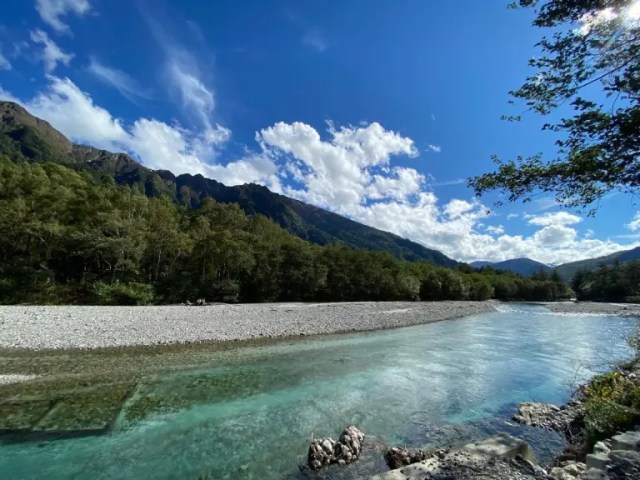
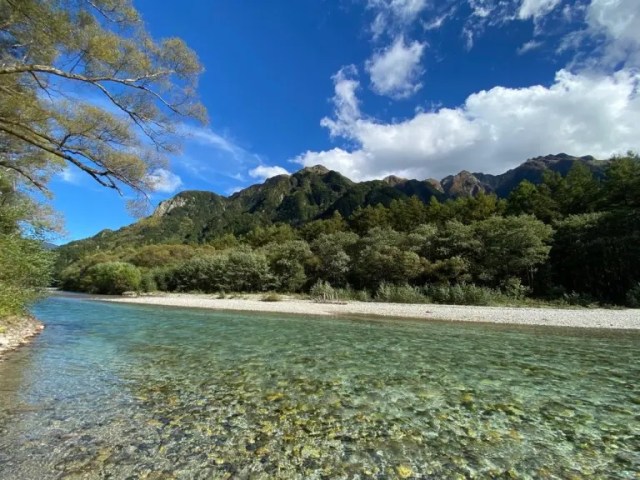
We made our visit in early October, before the leaves started to change to their autumn colors, but the contrast between the green forest, blue sky, and white clouds took our breath away time and time again as we headed towards Kappabashi.
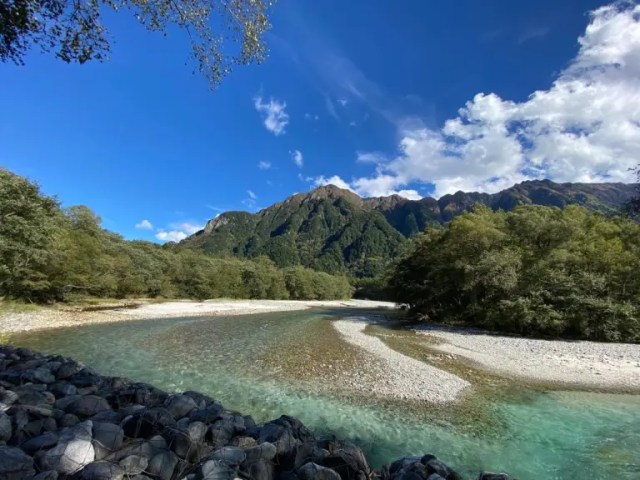
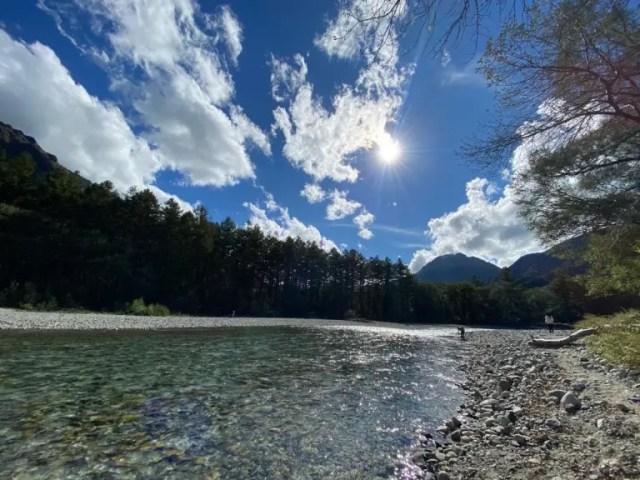
While in Kamikochi, you’ll probably spot depictions of Walter Weston, an English missionary who lived in Japan between 1889 and 1895. Weston’s proudly professed fondness for Kamikochi is considered to have helped establish alpine hiking as a recreational activity in Japan, and he was a founding member of the Japanese Alpine Club outdoors society. A monument to Weston, with a relief likeness of him, is in place on the western side of the river south of Kappabashi.
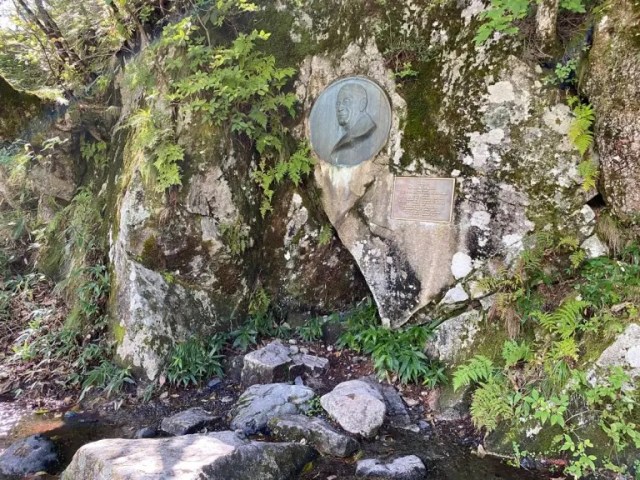
Though it’s high up in the mountains, this section of Kamikochi’s hiking paths is relatively flat. You wouldn’t want to show up in sandals or heels, but you don’t necessarily need full-on hiking boots. Comfortable walking shoes will do the trick, although you’ll probably want to have on a pair you don’t mind getting dirty or muddy.
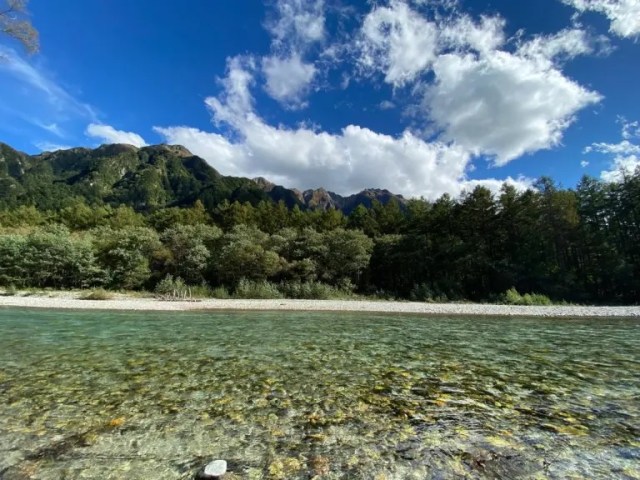
From the Teikoku Hotel-mae bus stop it’s about a 15-minute walk to Kappabashi, and the bridge is every bit as picturesque as its reputation claims, stretching across the river and nicely framing the valley behind it that rises to the top of the basin.
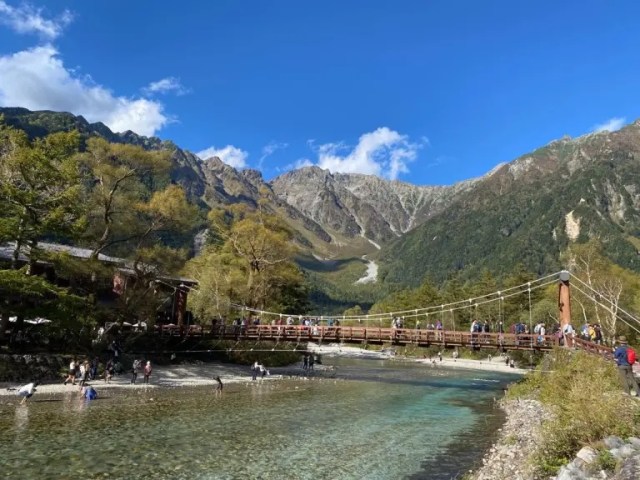
▼ Imperial Hotel to Kappabashi
Near the bridge is the Kamikochi Bus Terminal, which is as far into Kamikochi as you can go by motor vehicle. This also makes it pretty crowded with travelers, especially if you show up on a weekend. With a campground, a couple of restaurants, food stalls, and souvenir shops, the area around the bridge is a good place to grab a bite to eat and stock up on snacks, or even to knock back a locally brewed beer if you’re already on the way back from your nature walk.

▼ Canned wild boar and bear meat

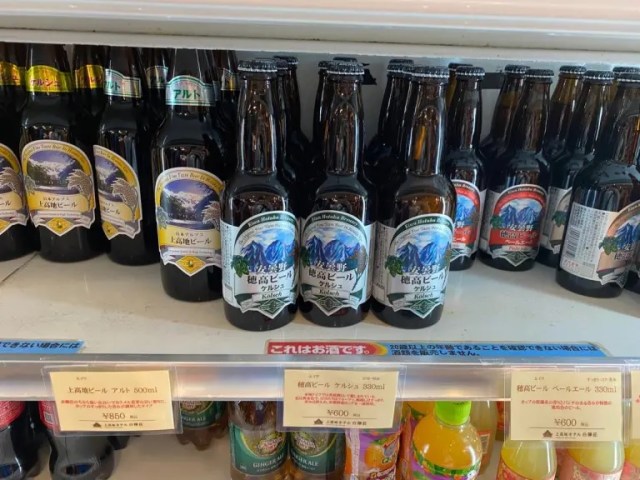
Having stopped to eat lunch, it was now about 3 p.m., but since we still had some daylight, we decided to check out the Dakezawa Wetlands, which are to the northwest of the bridge.
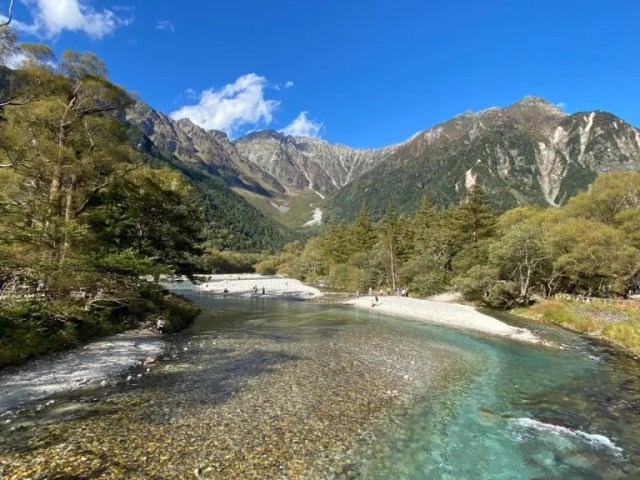
▼ Kappabashi to Dakezawa Wetlands
Certain sections of the trails are actually wooden planks built up above the brush, so you’ll want to watch your step, while also keeping an eye out for bears.
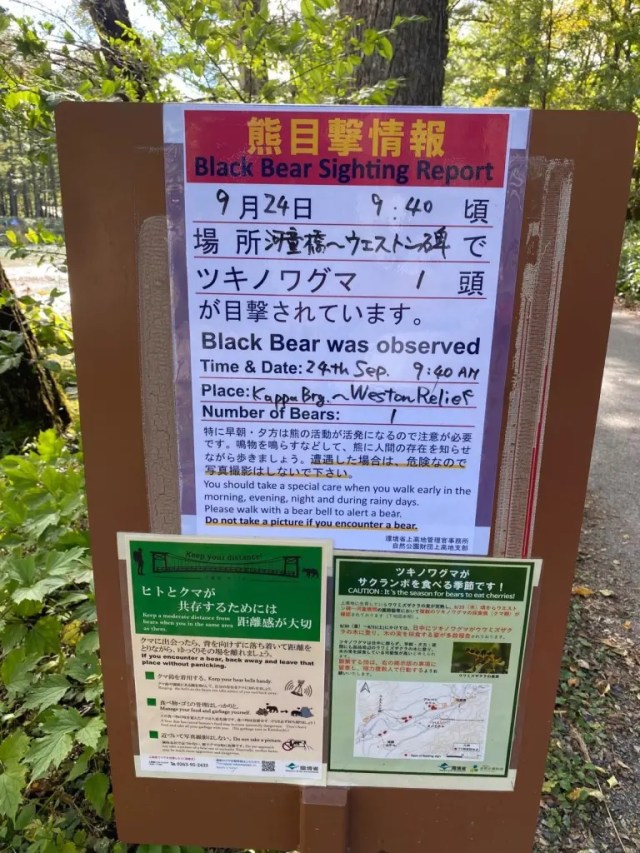
Since bear attacks are often caused by the animals being startled by the sudden presence of humans, rather than a genuine desire to attack or eat them, it’s recommended to affix a small bell or radio to your bag or belt when hiking in Japan, so that any bears in the area will hear you before they see you and not get spooked. Some parts of the Kamikochi trails also have larger fixed-in-place bear bells, which you’re supposed to ring as you walk past as a further auditory announcement.
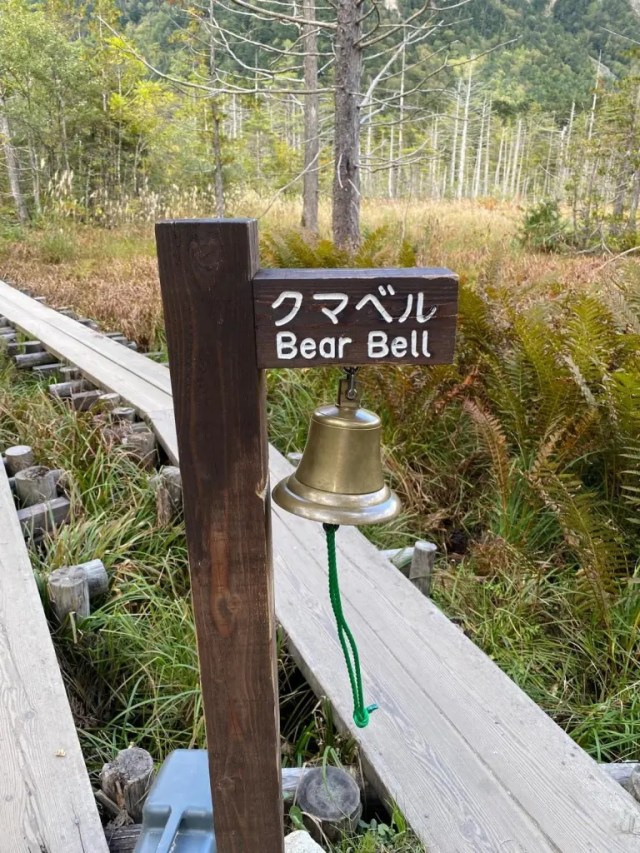
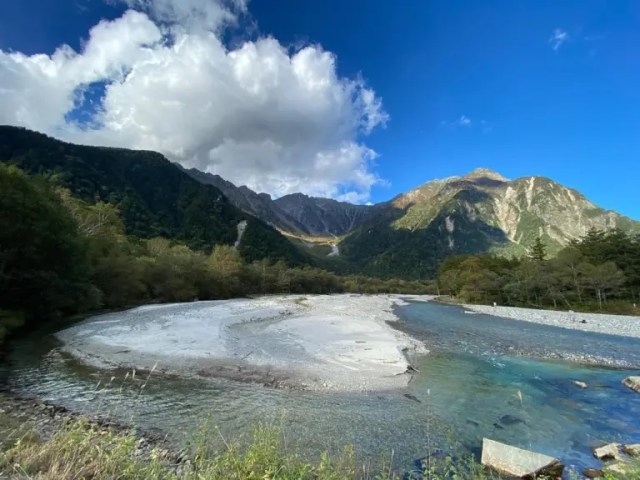

The Dakezawa Wetlands are well worth the 15-minute walk from Kappabashi, with a ruggedly tranquil beauty that was further enhanced by the lengthening shadows of the late afternoon…
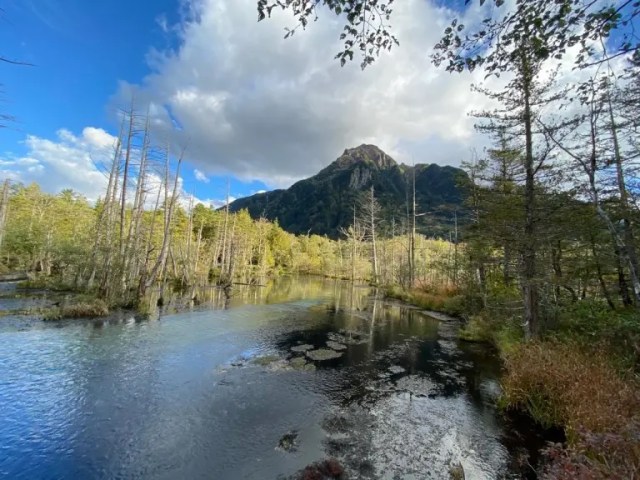
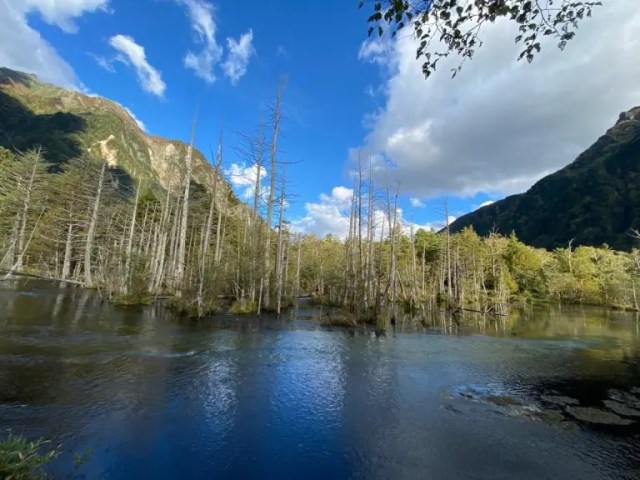
…and on the way back we got a special treat…
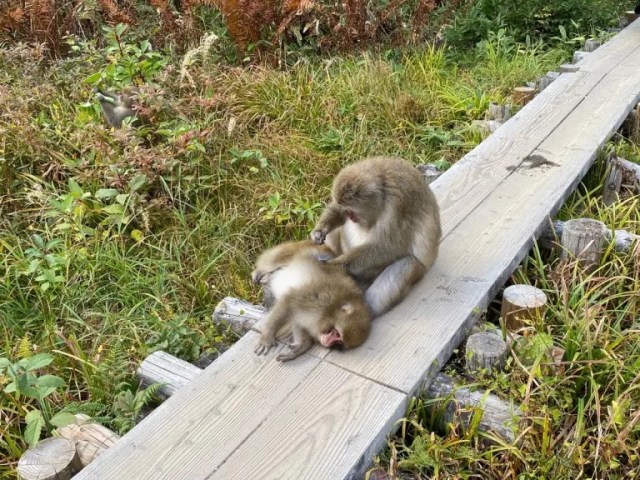
…when we encountered a group of monkeys! Apparently groups of them sometimes wander down into the river basin to forage for nuts and berries, and they’ve become somewhat accustomed to being around humans. They are still wild animals, though, so you shouldn’t try to pet or touch them, and avoiding eye contact is also recommended so that they don’t feel threatened and respond with aggression.
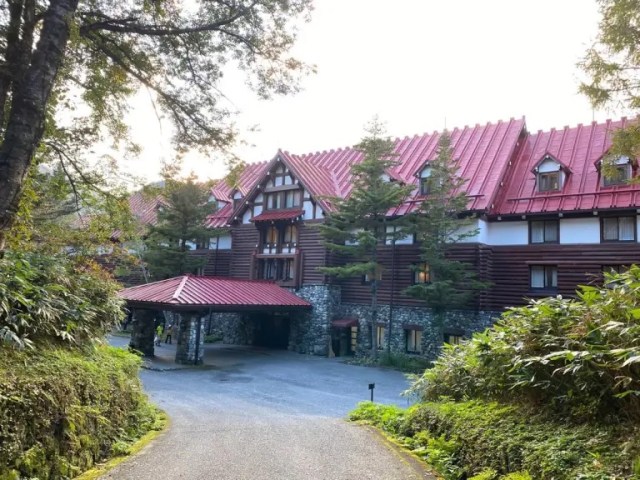
With natural scenery and outdoor activities being the draws in Kamikochi, there’s not much to do once the sun goes down, which is part of why we’d decided to splurge on a night in the Imperial Hotel, which has been in business for close to 100 years. We’ll be back soon with our report on the place plus more of the area’s outdoor charms with part two of our Kamikochi trip!
Photos ©SoraNews24
● Want to hear about SoraNews24’s latest articles as soon as they’re published? Follow us on Facebook and Twitter!
Credit:

0 comments:
Post a Comment